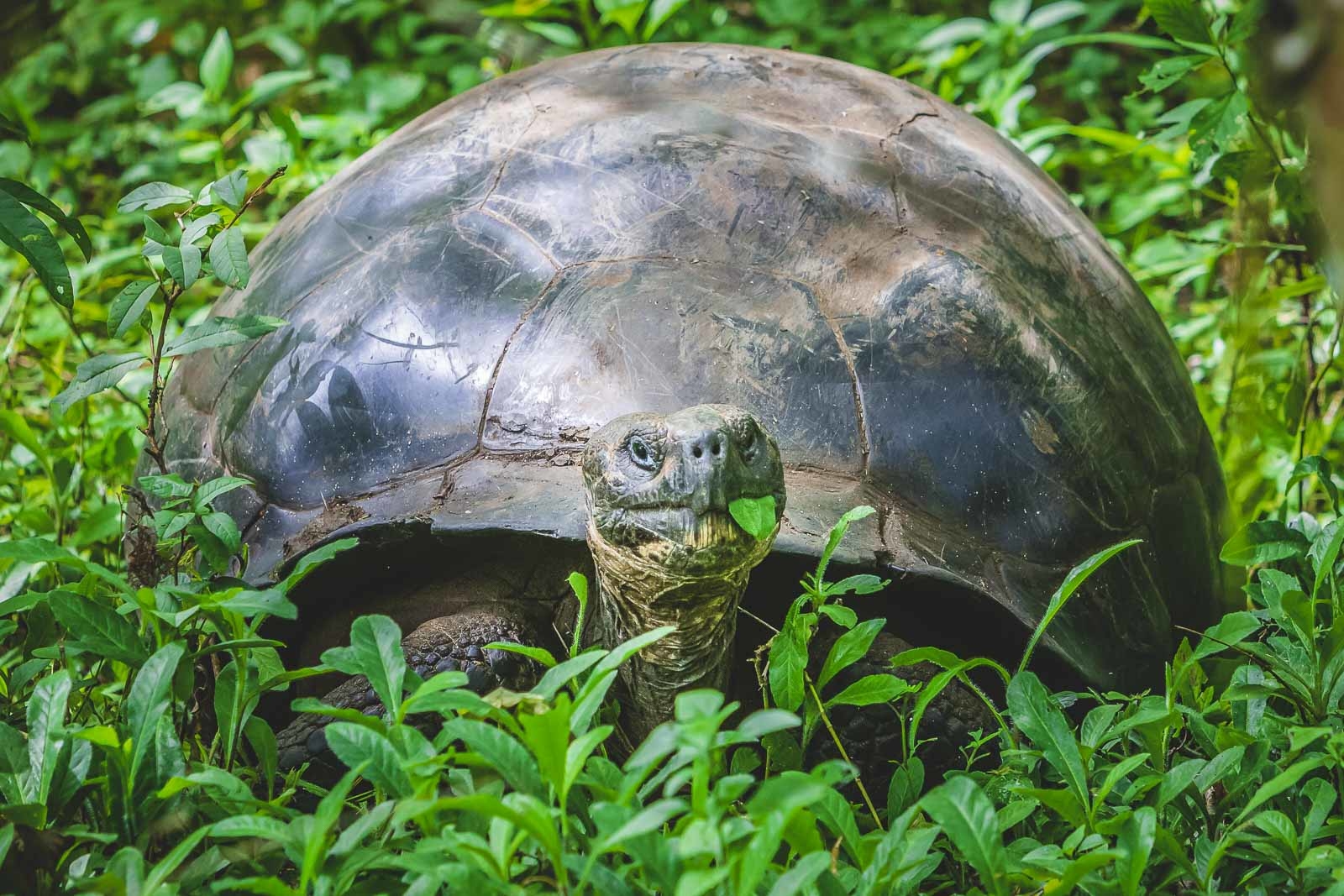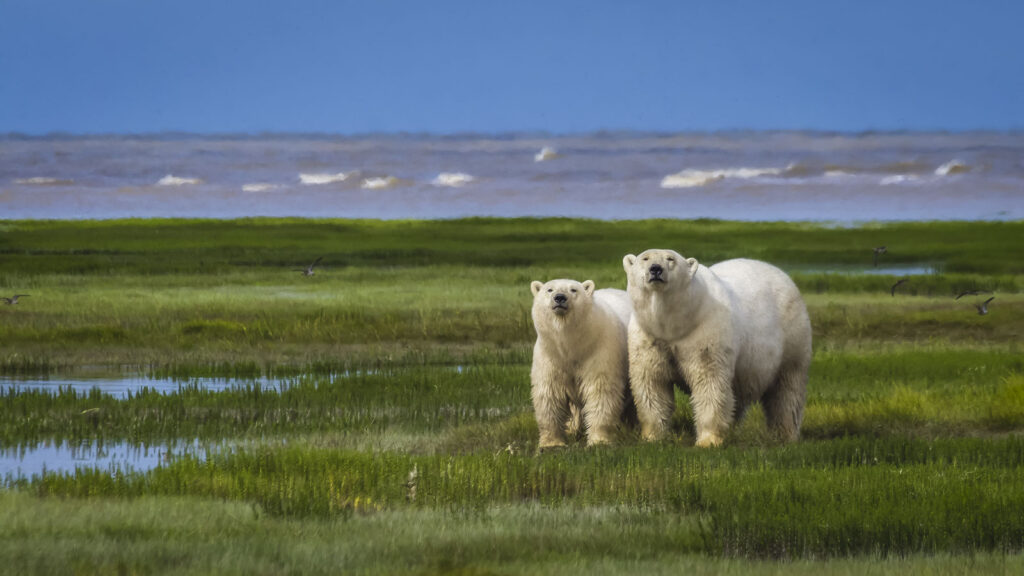Yesterday in Ontario Canada we woke up to several inches of snow. A few days earlier, we were walking outside in shorts and a T-shirt. Our climate is confused. As we travelled pre-pandemic we saw the signs of climate change all around the world. It seemed that every guide said things to us like “This isn’t normal weather” “It isn’t normally this hot” or “It usually doesn’t rain this much. Or “These winds have never been so strong.” Something is going on and wildlife is paying a huge price.
It is estimated that by 2100, 50% of the wildlife in the world will have gone extinct due to climate change. Right now there are about 2 million species on earth. Can you imagine losing half? That’s Thanos numbers! It is tragic and it breaks my heart. The animals of the world are so special to Dave and me. I think the best moments of our travels have been our wildlife encounters. So we wanted to send a little reminder of just how beautiful, cute, and special the animals of the earth are. And there is no better day to do that than on Earth Day.
What is Earth Day?

Earth Day has been celebrated since 1970. Even 50 years ago, humans knew the world was in crisis. In the years before, smog over cities was commonplace, natural resources were being harvested without a care in the world, and lakes and rivers were suffering from toxic pollution. I remember learning about acid rain in school and being told not to swim in the lake. Wow, times have changed.
Photos by ThePlanetD all rights reserved – Check out Dave’s webinar to see how to take great wildlife photos.
Polar Ice Caps are Melting

All of the human development putting greenhouse gases into the air has caused temperatures to rise at a fast rate. This is wreaking havoc from the north pole to the south. Luckily, people are taking action, and if we ignore everything Al Gore told us 20 years ago that we only had 10 years to make a difference, we can perhaps reverse the effects if we all work together.
It wasn’t until 1990, that earth day went global and 141 countries joined in to raise awareness about the environment. Over the years, it has kept going, but I fear that it has been losing steam. The world hasn’t changed enough, with climate deniers still going strong in some circles, not enough is being done by governments to save our planet.
But 2021 is feeling hopeful. President Biden is back making climate change a priority. Canada has pledged to do better and even our conservative opposition leader has admitted that climate change is real. (which was a huge surprise and so against his party lines). Today, Earth Day is celebrated by 193 countries with 1 billion people taking part.
How to do your Part on Earth Day

There are so many things we can all do to pitch in and help make the world a better place from reducing our use of plastics, volunteer for cleanups, drive less shorten our commutes, limit our use of water and go vegetarian. (or at least cut down on meat).
The youth of today are leading the way. They are the activists of our time doing their part to make their future brighter. It is the next generation that is really going to suffer the consequences and they are using their voice to make change happen. While they celebrate today, we want to speak up for the other living things that don’t have a voice to save their homes. Wildlife is being threatened around the world and it would be a terrible shame to see it all gone in the coming years. Just look at these faces below.
Wildlife Threatened by Climate Change – World on Earth Day
Polar Bears

Polar Bears have become almost the poster child of climate change with the Arctic waters being so affected by climate change. As ice melts faster in the spring and comes in later in autumn, they have less time to feed during the winter months. But there is hope. We watched an amazing documentary by David Suzuki on the Nature of Things showing how polar bears have adapted. That doesn’t mean they are out of the woods, but it does show they are smart cookies. Read about our polar bear encounters at Walking with Polar Bears – The Greatest Arctic Safari
Pandas

Another poster child for conservation efforts and with good reason. The Giant Panda has been disappearing for some time. People have been working hard over the decades to keep them thriving, but it almost seems a losing battle. They have a low production rate and cannot adapt to climate change. With humans encroaching on their environment pandas need to search for higher ground where their main diet of bamboo does not flourish. Check out Things to do in China – Must See Attractions and Places to Visit
Penguins

Making our way to the polar opposite side of the planet, penguins are seeing the effects of climate change as well. The Antarctic Peninsula is one of the most rapidly warming parts of the earth. Nesting and hunting grounds of the penguin are becoming unreliable ruining their chances of survival. See more penguin adventures 11 of the Best Things to do in Antarctica
Koala

During the fires of 2020 in Australia, the Koala made a lot of headlines as good samaritans were trying to save them from the devastating fires. Sadly bush fires are becoming more frequent because of climate change and their main diet in the Eucalyptus Tree are decreasing the nutrition in the leaves. Koalas are at risk and don’t have many ways to protect themselves other than being high in a tree. As they need to search for water far and wide in doubt, they become prey for animals and are very vulnerable. See our visit to a Koala Sanctuary – Cuteness in South Australia
African Elephants

Not only do elephants have to deal with poaching, climate change is affecting them with temperatures rising and disease encroaching on their environment. With disappearing watering holes due to increasing droubts and habitat loss, the African elephant is facing an imminent threat. Enjoy our African Safari Animals: 34 Photos to make you want to visit Tanzania
Giraffes

We have all heard for years about the dwindling numbers of elephants. But giraffes quietly went on the critically endangered species list in 2018. We can believe it, during our safaris in Africa, giraffes were some of the most elusive animals. We thought it was just that they blend into the environment so well, but in reality they are disappearing. Read: 16 Amazing Things to do in Tanzania
Lions

And even the king of the African Savanna is being affected. As animals change their migration routes due to climate change, lions are confined to national parks and game reserves and cannot move with their prey. Lions are already endangered and as droughts and habitat loss becomes more commonplace, we could lose this majestic animal for good. See more African Safari photos: Incredible Kenya Pictures an Amazing Visual Journey
Galapagos Tortoise

The Galapagos Tortoise has survived the centuries, but it may have soon met its match with climate change. As the temperatures rise, its nesting and hatching are being disrupted. We have seen the conservation efforts in the Galapagos and the people there are working hard to save the baby turtles and tortoise, but it is getting ever more difficult to fight Mother Nature. Read more: Unique Galapagos Islands Animals in Photos
Iguanas

The Galapagos marine and land iguanas are also under threat. The Galapagos is located at the equator and it is hot. It is hard to imagine it getting hotter, but it is. As oceans rise due to warming currents, coastal erosion is happening at a greater pace it is reducing their nesting areas.

I love the blue footed booby and even birds are being affected. These gorgeous sea birds nest on coastal islands and rocks and as sea levels rise, their nesting grounds are being disrupted. They have already abandoned regular breading colonies after El Nino, and that trend will continue.
Toucans

We saw a lot of toucans in Costa Rica and the Amazon Rainforest, and sadly, these beautiful birds are being threatened by humans. Toucans live inside trees that are being torn down to make way for coal mines, and with the mines and deforestation, water is being contaminated.
Primates

They are our closest relative in nature and monkeys, lemurs, and apes are all being affected by climate change. The orangutan has been at risk for as long as we remember. When we visited Borneo in 2003, they were already suffering due to habitat loss.

As the climate becomes more unpredictable, changing rainfall is altering the eco system. Doughts are becoming more common and habitat loss is inevitable as humans tear down forests and spread. If we can’t protect our closest relatives in the animal kingdom, how can we protect ourselves?
Sharks

Warming waters are affecting sharks as they search for suitable habitats and hunting grounds. Have you noticed over the years that people are spotting great white sharks in places they never were before? That is because sharks need to constantly move to find waters to suit their needs which is becoming more diffiult as the oceans temperatures change while the polar ice caps melt into the sea.
Seals

Seals are having a rough go during the rising temperatures as well. Like the Polar Bear, they rely on sea ice to survive. As temperatures rise, the ice flows become scarce and pups are prematurely separated from their mothers
Whales

Whales depend on ocean currents to migrate, hunt and survive.
Sea Turtles

Sea turtles don’t have it easy to begin with. They face challenges from the moment they hatch. Only one in every thousand eggs laid survive. And now as temperatures rise and erode nesting areas, they face even more of a threat. Ocean currents are changing and as other species search for new hunting grounds, the sea turtle is at greater risk to predators. Coral reefs are disappearing and plastic is taking its toll on all marinelife. Our oceans are in a sad state.
Black Bear

The Black Bear isn’t thought of regarding climate change as much as the other animals, but even they are being affected. Climate change is making it difficult for the black bear to hibernate. Living in Canada, we see how winters have changed. We can have warm days in the middle of January and snow in April. With all the confusion, bears are coming out of hibernation early making gaining their weight back more difficult as food is scarce. Sadly, that is forcing bears to go into urban centers looking for food and being euthanized because of it.
Nearly every species on earth is being impacted by climate change. Humans included. Floods are growing more fierce, wildfires burn out of control, so today, let’s all pledge together to make a difference. Even if it is simply watching the events and educating ourselves to do better.
Earth Day happens each year and you can check out live streams and events on the EarthDay.Org Website.

